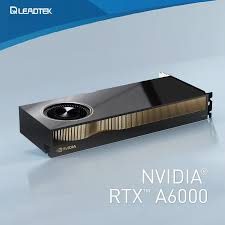Architecture: Ampere and RT Cores

NVIDIA has been a leading player in the graphics card market for years, consistently pushing the boundaries of performance and visual fidelity. With the introduction of their RTX series, NVIDIA brought real-time ray tracing and AI capabilities to the gaming industry, revolutionizing the way games are rendered and experienced. In this article, we will delve into the features and advancements of NVIDIA’s RTX series, exploring the architecture, gaming capabilities, and future prospects of these powerful GPUs.
Architecture: Ampere and RT Cores
At the heart of NVIDIA’s RTX series is the Ampere architecture, which powers their 2nd generation RTX GPUs. The Ampere architecture introduces dedicated 2nd generation RT Cores and 3rd generation Tensor Cores, along with streaming multiprocessors, to deliver exceptional performance in ray-traced graphics and cutting-edge AI features [1]. These advancements allow for real-time ray tracing, a rendering technique that simulates the behavior of light in a scene, resulting in more realistic lighting, reflections, and shadows in games.
The RT Cores in the Ampere architecture are specifically designed to accelerate ray tracing calculations, enabling games to achieve higher levels of visual fidelity without sacrificing performance. By offloading ray tracing computations to dedicated hardware, the RTX series GPUs can deliver smooth and immersive gaming experiences even in demanding ray-traced environments [1].
Performance: DLSS and Reflex
In addition to ray tracing capabilities, NVIDIA’s RTX series also introduces DLSS (Deep Learning Super Sampling) technology. DLSS leverages the power of AI to upscale lower-resolution images in real-time, resulting in higher-quality visuals without compromising performance [2]. By using machine learning algorithms to analyze and reconstruct images, DLSS can deliver sharper details and smoother edges, enhancing the overall visual experience in games.
Another notable feature of the RTX series is Reflex, which aims to reduce system latency and improve responsiveness in competitive gaming scenarios. By optimizing the rendering pipeline and reducing the time it takes for user inputs to be reflected on the screen, Reflex provides a competitive edge to gamers, allowing for quicker reactions and more precise gameplay [2].
Gaming Capabilities: Minecraft with RTX
One of the most impressive showcases of NVIDIA’s RTX series is the integration of real-time ray tracing in Minecraft. Through NVIDIA’s partnership with Mojang Studios, Minecraft with RTX brings a new level of visual fidelity to the beloved block-building game. Players can experience realistic lighting, shadows, and reflections, transforming the familiar pixelated world into a stunning and immersive environment [3].
The combination of ray tracing and DLSS in Minecraft with RTX not only enhances the visual quality but also improves performance. DLSS allows players to maintain high framerates while enjoying the benefits of ray tracing, making the game both visually appealing and smooth to play.
Future Prospects: The RTX 4060 Ti
Looking ahead, NVIDIA continues to innovate and expand its RTX series. The upcoming release of the RTX 4060 Ti 16GB addresses one of the criticisms of its predecessor, the RTX 4060 Ti 8GB, by providing more VRAM for improved performance [4]. This GPU is expected to offer gamers an even better gaming experience with its increased memory capacity and enhanced capabilities.
As NVIDIA pushes the boundaries of real-time ray tracing and AI technologies, we can expect future iterations of the RTX series to deliver even more impressive performance and visual fidelity. With each new release, NVIDIA solidifies its position as a leader in the graphics card market, driving innovation and pushing the gaming industry forward.
Conclusion:
NVIDIA’s RTX series has revolutionized the gaming industry with its real-time ray tracing and AI capabilities. The Ampere architecture, with its dedicated RT Cores and Tensor Cores, enables exceptional performance in ray-traced graphics and cutting-edge AI features. DLSS and Reflex further enhance the gaming experience by providing higher-quality visuals and improved responsiveness. Minecraft with RTX showcases the potential of ray tracing in games, transforming the visual fidelity of a beloved title. With the upcoming release of the RTX 4060 Ti 16GB, NVIDIA continues to push the boundaries of performance and innovation. As the RTX series evolves, gamers can look forward to even more immersive and visually stunning experiences.





